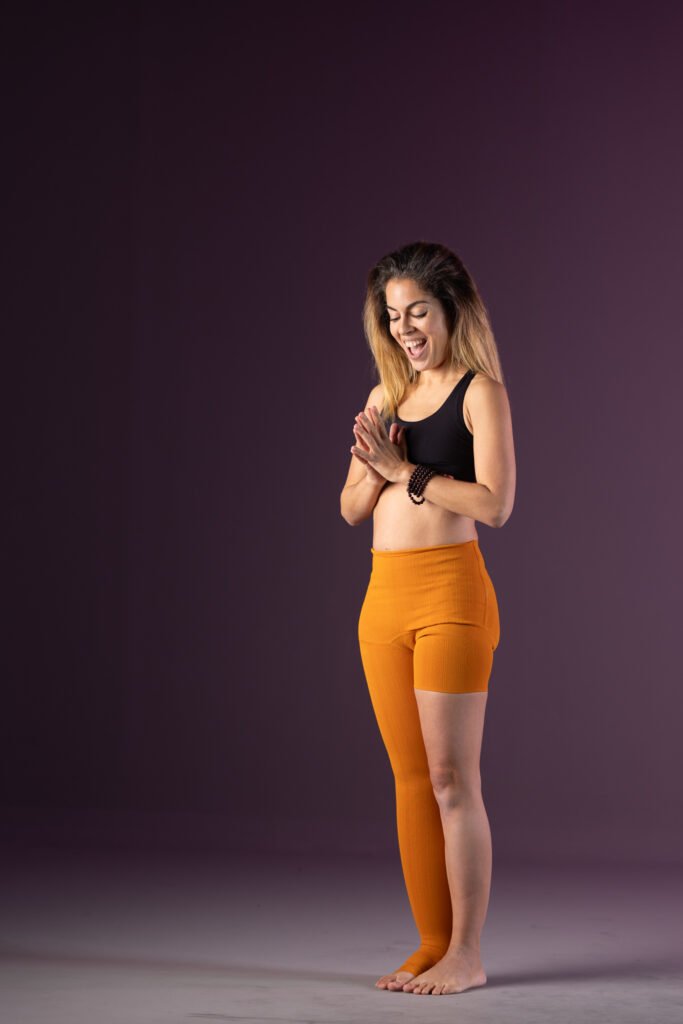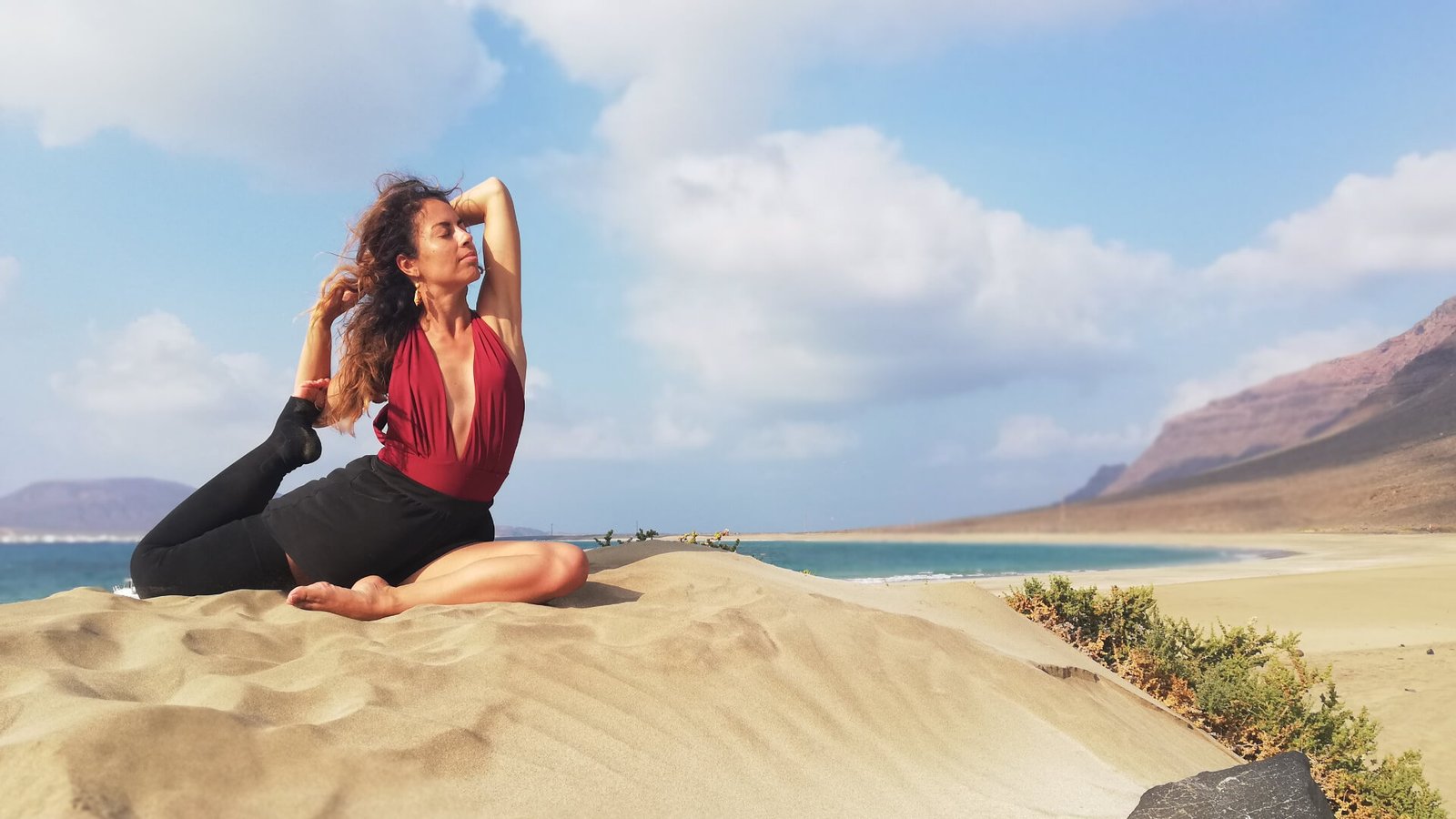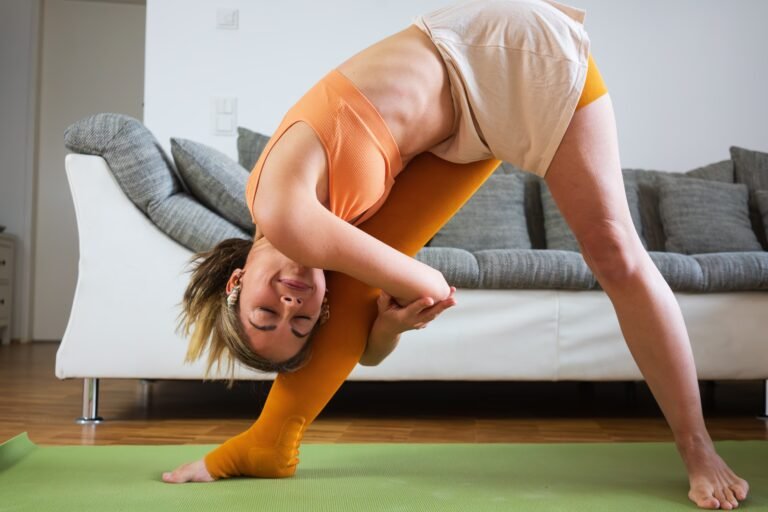Compression Stockings and Movement for Lymphedema Treatment
When I was diagnosed with lymphedema in 2015, I encountered two contradictory situations:
- Doctors claiming that there was nothing I could do because it’s a disease that currently has no cure.
- Specialists assuring me that the only option for treatment is surgery.
These two stances made me feel like a victim, making me believe that either I couldn’t do anything to contribute to my well-being or that the solution was out of reach.
Over time, through education, research, and connecting with other patients, I learned that in the treatment of lymphedema, there are many non-invasive options to reduce inflammation, prevent complications, and most importantly, empower me, making me feel capable of improving my well-being.

One of the most effective treatments is to combine compression stockings or bandages and movement.
Today, I’ll tell you about compression stockings because the inexperience and lack of training of healthcare professionals often hinder their ability to provide us with the necessary recommendations on what type of garment is best for us.
In fact, the first stockings I was prescribed were for venous insufficiency, which are much more elastic and have nothing to do with orthopedic compression garments for lymphedema. As a result, my condition worsened. So, this article is to prevent you from experiencing the same thing I did and to inform you about the options available. Here’s a link (in spanish language) with recommendations for prescribing these garments.
The goal of compression stockings for lymphedema treatment is to stop the progression of edema and its complications and to aid lymph circulation. However:
What type of stockings to buy
There are many factors to consider when choosing the best compression stockings for you:
- Compression level: The pressure should decrease from distal to proximal. That is, for example, more pressure on the ankles than on the thighs. Keep in mind that there are different classes of stockings according to the level of compression (Class I – IV), and the pressure level of each class depends on each country.
- Type of fabric: flat or circular. For people with lymphedema, flat fabric is recommended as it is more rigid and more effective during movement.
- Length: knee-high, thigh-high, or pantyhose.
- Custom-made or prefabricated: for chronic edema, always custom-made to ensure effectiveness.
- Color: choosing other, more fun colors has reinforced my self-confidence.
- Fashion accessories: options like “bottom shaping” and shiny details aim to make us feel more feminine and boost our self-confidence.
- Comfort level: Since we wear compression stockings throughout the day, it’s important to feel comfortable in them. There are several extra options available:
- The “functional zone,” specially designed for active individuals or those who keep their knees or elbows flexed all day, for example, if you work seated at a PC. Neither my doctor nor the orthopedic store informed me of this option despite mentioning that I danced professionally and taught yoga classes. Since the folds behind my knees caused chafing, I had the possibility to return my stockings and look for another option. The representative from the JOBST brand recommended incorporating this feature, and it really makes a difference. Other brands also offer it; ask at your specialized store.


- Waistbands: I have used the waistband and the knitted band and personally I find the latter much more comfortable. The important thing is to know that there are options -> (View different options from MEDI here).
- For the foot, there are alternatives that relieve pressure on Hallux Valgus and Bunionette or tailor’s bunion. There are also different versions (view MEDI) to treat toe edema.
- Velcro and zipper closures.
- Pads: I use L-shaped pads for the ankle to soften tissues affected by lymphedema, but there are others to protect delicate skin, etc.
- Pregnancy: I’ve used stockings designed for this stage, and they were very comfortable for the abdomen.

Where to buy them and their cost
Compression stockings are obtained with a medical prescription from a specialist. It’s helpful if they have access to your medical history. In my case, I found an orthopedic store with experience in products for lymphedema/lipedema patients. They often advise me (and the doctor) on what exactly to put on the prescription. I live in Düsseldorf, and fortunately, the German healthcare system covers most of the cost of the stockings. One pair every six months, and in exceptional cases, three pairs per year. But it’s different in every country.
After getting the prescription, you need to take it to an orthopedic store where they will measure you and you can choose the color and other details. Once the healthcare system approves covering the cost, the manufacturer starts making your custom-made stockings. When they are ready, you can go and try them on. Remember, there’s a trial period during which, if there are any issues or defects, you have the right to exchange them for others.
How often to change stockings
To ensure their therapeutic effectiveness, it’s recommended to change them every 6 months, and at most, every year. Hence the importance of knowing how to properly care for them.
How to wash them
It’s recommended to wash them every day, so it’s good to have another pair to alternate. Follow the washing instructions of your garment, but from my experience, I’ll tell you to:
- Wash them by hand in cold water, with neutral soap and no fabric softeners.
- After rinsing, remove excess water without wringing them out.
- Dry them horizontally in the open air without exposing them directly to the sun or other sources of heat.

How to put them on
It’s advisable to put them on first thing in the morning when our limbs are less swollen.
Rubber gloves facilitate the placement of the stockings and protect them. If you don’t use them, be careful with nails, rings, and other jewelry that may damage the material.
Avoid pulling the stockings up too forcefully and do it gradually, avoiding wrinkles.
And in summer with the heat
Yes, even with stockings, as high temperatures can worsen your edema. You can use old stockings for swimming in the pool, sea, or lake. This not only cools you down but also stimulates the lymphatic system doubly thanks to the water pressure and muscle activity.
Should I wear compression stockings when exercising?
Studies show that YES. Exercising with bandages or compression stockings reduces edema volume. In specialized Lymphology clinics that are world-renowned, they already use the combination of bandages and movement for lymphedema treatment with very positive results.
And you, what are your favorite stocking colors? Do you prefer more discreet ones, or do you go for bold colors and patterns?
Free Recources





